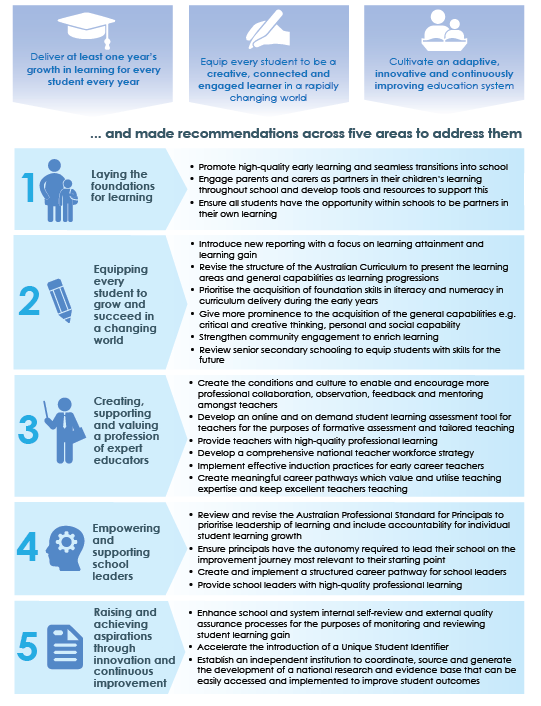Gonski 2.0 and what it means for boys

As parents, many of you would be aware of the latest Federal review into education led by David Gonski (sometimes titled ‘Gonski 2.0’) released on 30 April 2018. The report is referenced often but many of us are not sure exactly what is in it. So here is a brief overview of the report and what we might take from it.
What is the Gonski report?
Well, back in 2010, David Gonski (a businessmen known for his philanthropy) was asked by Julia Gillard (then Education Minister) to lead a review into the state of education. At the time, key concerns for Australia’s schools were (and remain) our relative decline in academic achievement internationally (both in maths and literacy), a significant gap between our high- and low-performing students and a clear link between social disadvantage and low achievement (particularly in low socioeconomic backgrounds). Gonski’s first report recommended increased funding to finance a needs-based model for education, including loadings for students from disadvantaged backgrounds. This became known as the ‘schooling resource standard’ and the purpose was to promote better equity and resourcing for Australian children.
Due to the realities of our existing funding models (with the interplay between State and Federal Governments in education), much of Gonski 1.0 was unfunded until 2017 (Financial Review, 9 May 2018). Nevertheless, in the lead-up to the 2016 election, then Prime Minister Turnbull announced a new Gonski-led review, which would go deeper with the question: What are the key areas that we need to focus on nationally?
The full report, Through Growth to Achievement, can be read here (PDF 2957 KB), and it includes this summary:

Since the release of the report, much debate has ensued in the media. The debate seems to centre on a few critical areas:
- When, where and how funding is allocated – does it focus on the right things?
- Tensions between a more traditional view of education (the three R’s – reading, writing and arithmetic) and the ‘general capabilities’ (critical and creative thinking, for instance) of the future
- Tensions in the role of the teacher (either as an instructor and knowledgeable expert who can impart skills or as a facilitator who helps students to ‘discover’)
- Opinion that the report is not clear and the language is not well-defined with clear outcomes
During this year, I attended an ASSIS meeting (Association of Senior Staff in Independent Schools), which is supported by the Centre for Strategic Education. Here, I heard from Associate Professor Sandra Milligan (Director, Assessment Research Centre, Melbourne Graduate School of Education). Her take on Gonski was that perhaps it didn’t go far enough and that to really address the challenges that Australia faces internationally, we need to do more.
So where does that leave us as parents, trying to give our boys the best education we can?
It’s tough! But first, we know that there is no better gift to a child than a great education. A school should therefore be working to lift student learning outcomes (both academic and wellbeing). Second, the report advocates an aspirational culture with high standards – one that fosters an intrinsic desire for our boys to improve and aspire. Finally, a focus on looking at learning through experience as well as the opportunity to develop resilience and purpose will help future-proof our boys and enable them to flourish in the uncertain years to come.
Probably the best comment I have heard through all the media and analysis was from our Headmaster on gate duty: “Ray, there are some big changes coming and it’s a great time to be in education!”
Reference
Gonski 2.0 report fails some pretty basic tests, Financial Review, 9 May 2018.
Brought to you by Brighton Grammar School
Dr Ray Swann is Deputy Headmaster/Head of Crowther at Brighton Grammar School, an all-boys school in Melbourne. His professional background includes consulting, research, lecturing and coaching. This article is about EducationYOU MAY ALSO ENJOY
Subscribe to Understanding Boys. It’s free!
Got boys? Sign up for tips and advice you'll actually use.



